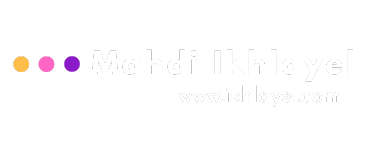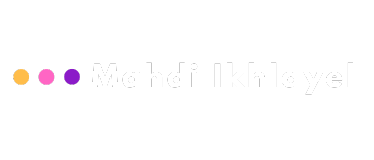Software & Tools for Researchers
Several types of software that can help to boost researcher productivity are available. Some of which are paid, while others are free or open-source. Here you will find a list of software that I think are very useful during research stages, from conducting a study to the writing processes and publication.
EndNote: EndNote is the leading software for articles management and citation. It is a powerful software available for Windows and Mac users. It integrates with MS Word and supports citation for various fields of study and citation styles and powerful import and export features with different citation formats and file types. With EndNote, you can also sync your literature library with EndNote online and synchronize it with other PCs. Sharing tools are also a major advantage of EndNote. On the other hand, it has some cons as below:
- Software updates are too slow, even those urgent to fix major bugs. In some cases, the user goes to have to wait a long time till a release.
- It lacks a modern user interface.
- The PDF viewer offers basic functionalities.
- Storing the library (including the PDF files) on a cloud drive on the local computer (e.g., Dropbox) results in data corruption. The database must be set up on the local disk to avoid such an issue.
- Sync on Mac is very slow.
- It is expensive; however, a discounted version is available for students at half the price OnTheHub.
- EndNote, in several cases, displays the short name of Journals, while several journals require full journal names. In many cases, the user needs to manually edit the journal’s term list in their field of study.
I have found EndNote still the best software available for literature management and citation, even with those cons. One good point, the support team is professional, quick in response, and available on chat, and they offer a remote session to resolve the issue if required. The team also follows up with the user.
URL: http://endnote.com
Tableau is the most powerful software for data visualization. With both Windows and Mac versions, it helps to understand, visualize and present data and results. Though there are various desktop and web-based alternatives, I found that Table is best. The support team is lovely and great by all means. After two years of use, the only issue I found with Tubule is that it does not function properly on a virtual machine installed on a Mac. However, a standalone Mac version is offered.
The good news for students is that it is available for free. You can visit the website and apply for a free and yearly rentable version.
e!sanky: I found e!sankey is the professional software for energy and materials flow visualization. It comes in two versions, the standard and the professional. The most important feature of the professional one is the live connection feature with MS-Excel. For example, the flow data one!sankey will be updated automatically whenever the user updates the linked MS-Excel file. However, I think the software is pricey, especially for students. From a technical support view, the support team is very useful.
URL: https://www.ifu.com/en/e-sankey
MAXQDA: A very powerful and elegant software for quantitative data analysis. Whether you deal with interviews or literature reviews, it is the best software to be done. Available for Windows and Mac and with a discounted and reasonable price for students. You can find almost every function you need for a simple, minimal, and modern user interface. Though importing PDF files for literature review should be an essential function in QDA software, you might find it the best in MAXQDA. That is because it is very fast and convenient with further alternatives. Dealing with PDFs is essential, but it is problematic with other options. One other wonderful thing is that it is light and fast.
STAN: A convenient and useful software for doing Material Flow Analysis, and I think it is a must-have software for researchers dealing with MFA. It is free of charge and easy to use.
JapRef: A tremendous open software for Windows, Mac, and Linux. It is a bibliography reference manager in BibTeX file format.
OpenLCA: A must-have open source software for any researcher dealing with Life Cycle Assessment (LCA) or any LCA learner. The two major advantages of OpenLCA is Life Cycle Inventory data conversion, exploring LCI databases (e.g., input-output emissions and documentation), and conducting an LCA study. Available for Windows, Mac, and Linux.
URL: http://www.openlca.org/download
ITHOUGHTS: For mind mapping for Windows, Mac, iPad, and iPhone is, so far, the best mind mapping software I have ever tried in crowded mind mapping applications. What makes it unique is its extreme simplicity and the concept that it is based upon. Lightweight software lets the user present and simplifies thought quickly and on the go, even on a computer.
URL: https://www.toketaware.com
NCSS: The most straightforward statistical software with an elegant and user-friendly interface for several analytical tasks. A discounted version is available for students at half the price OnTheHub.
URL: https://www.ncss.com
Other software:
Quantitative Data Analysis (QDA)
- Nvivo (http://www.qsrinternational.com/nvivo-product)
- Atlas.ti (http://atlasti.com)
English language and proofreading related software
- Hemingway App (http://www.hemingwayapp.com)
- Ludwig (https://ludwig.guru)
- ProWritingAid (https://prowritingaid.com)
- Writefull (https://writefullapp.com)
MS-Excel add-ins
- Ultimate Suite for Microsoft Excel (https://www.ablebits.com)
- ASAP Utilities for Excel (http://www.asap-utilities.com)
- Kutools for Excel (https://www.extendoffice.com)
Data visualization
- Microsoft Power BI (https://powerbi.microsoft.com/en-us)
Other resources
The “101 Innovations in Scholarly Communication” provides a comprehensive range list of software, web applications, and other resources. You might be interested in visiting it at http://innoscholcomm.silk.co/explore

